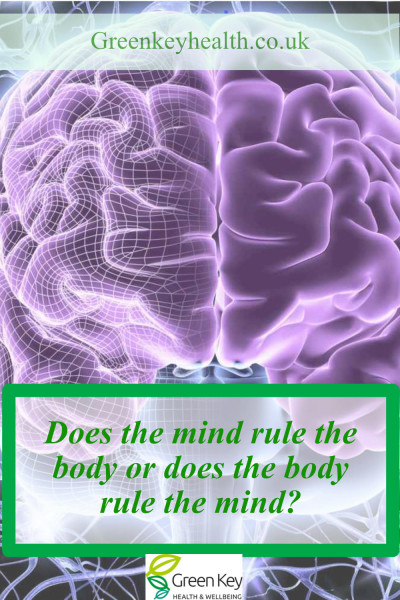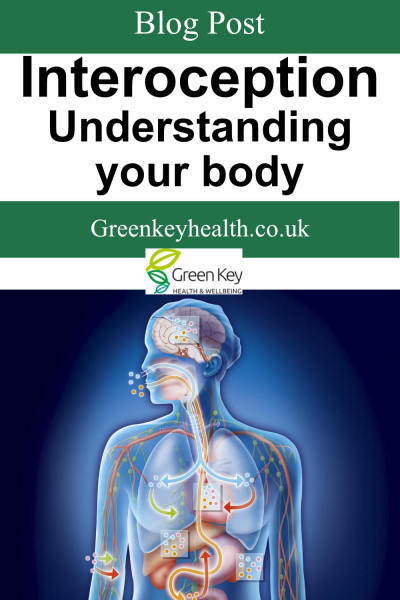
“Interoception” is not a new concept, it was already receiving attention over 10 years ago. However, with rising numbers of people suffering from mental health illnesses, often emotion and mood related is triggered by external factors that lead to internalising negative thoughts and feelings frequently to a point of “no control.” Consequently, “interoception” as a concept takes the stage more noticeably.
Defined as the “sense of the internal state of the body, whether conscious about that state or not.” “Interoception includes all signals from your internal organs, including your cardiovascular system, your lungs, your gut, your bladder and your kidneys,” as documented in an article in The Guardian, August 2021, written by David Robson, “The Hidden Sense that is Shaping Your Wellbeing”. In the same article Robson refers to the comment by Professor Mano Tsakiris, a psychologist at the Royal Holloway, University of London who said that “There is constant communication dialogue between the brain and the viscera.” When aware of this communication link, each one of us is better able to self-regulate. Self-regulation is not uncommon to most of us, as this is one of the main characteristics of Emotional Intelligence as defined by Daniel Goleman.

The main function of the brain is to maintain balance or allostasis within all bodily systems. It is responsible for predictive processes based on previous experience and the perception of the current experience. The former affecting how the brain responds to what is currently occurring. In other words, the brain regulates the body’s internal systems by anticipating our needs and preparing to satisfy them before they arrive. This function is central to our thinking process, emotional responses and decision making. When there is allostatic disruption, this can lead to feelings of depression, anxiety and other mental health disorders due to the perception that you can no longer control your own thoughts and feelings.
Who Rules Who?
This is not totally clear, but the current thinking and research by people such as Professor Tsakiris and Tallon-Baudry is that the brain is controlled by the body. “We tend to think that the brain is sitting on top of the pyramid, and it’s controlling the body in general – actually, it’s probably the other way around.” The main indicators behind this are in the way our bodies are literally wired as eighty percent of the fibres in our vagus nerve ascend to the brain from various organs, especially the stomach and heart. This reflects in our understanding through phrases such as “my gut instinct says….”, “my gut response is….” And so on. When we fear danger, it is the gut that sends the message to the brain via these communication fibres, triggering the fight or flight reaction, resulting more often-than-not in either standing up to the threat or running away from it.
The relationship between the heart and the brain for instance, can create enormous resistance to learning something new. Could there be a place for interoception to create a greater understanding of effective teaching methodologies in relation to children and adults who are unable to self-regulate?
A Blueprint for Emotional Response
Craig back in 2002 wrote that “Interception is a blueprint for an emotional response. The body sensation underlies most of our emotional feelings, if not all, particularly the most intense feelings of hunger, pain, body temperature and the need for survival.” Emotional regulation is equal to a coherent relationship with the self and plays a big part in effective communication between mind, body and feelings and consequent behaviour, reactions and mood.
What Herbs Positively Assist with Self-Regulation
We know that negative emotions lead to the fight or flight response, triggered firstly by gut instinct and then by the brain. Which herbs address this response, create a sense of calm and inner control, thus managing emotional responses and self-regulation more effectively?

In looking at herbs, or categories of herbs that denote particular actions, it is important to consider the whole person, rather than simply the symptoms and in addition to be mindful that herbs can interfere with medications by either increasing or decreasing efficacy. Therefore, the following are not meant as personal recommendations to be taken without guidance from a herbalist or other trained health practitioner, but merely to point out that herbs can provide safe solutions to those that are sensitive to external factors and limit the potential damage caused by internalising thoughts and feelings to a point of no control, oftentimes without the need to rely on pharmaceutical medication.
Adaptogens
In most cases when having difficulty self-regulating adaptogenic herbs have a role to play. They assist the body in managing stressful situations more effectively. In other words, adaptogens help each one of us to improve our adaptive capacity – our ability to adapt to our environment. Persons with a superior ability to adapt, not only survive, but also have a better chance of maintaining optimal health. Those with a weak ability to adapt are more prone to dysfunction, dis-ease and illness. Hans Seyle, the Austrian endocrinologist (1907-1982) defined stress as the “non-specific” response of the body to any demand.” Through research of the effects on the body, Seyle formulated the concept he named “General Adaptation Syndrome” (GAS) Seyle categorised the nonspecific responses of an organism to any stressful influence into three normal adaptive reactions that are sequential stages: - alarm, resistance and exhaustion.
Due to the body’s ability to adapt, these responses enable the body to heighten its power of resistance to stressors as it adapts to external conditions. Our physical and mental ability to endure a stressful event and successfully recover is based on the amount of adaptation energy you have available. In today’s world, the reality is often that for most of us the daily demands of our lives outpace our innate resources and capabilities, resulting in serious depletion of vital energy or life-force. Vital energy can be replenished by a good night’s sleep, a nutrient rich diet and a lifestyle that integrates work, play and rest. Adaptogens help the mind and body to maintain stability through stressful situations and change and can further enhance the impact of positive lifestyle changes.
Wonderful examples of adaptogens that work with mind and body include
Withania somnifera, commonly known as Ashwaghanda, Rhodiola rosea and Eleutherococcus senticosus. Ashwagandha is classified in the Ayurvedic tradition as a “rasayana” and therefore promotes physical and mental health. Often referred to as “Indian ginseng” is traditionally used for nervous exhaustion, insomnia, dementia and various respiratory disorders.
Rhodiola rosea – As a nourishing and energy-forming adaptogenic tonic, it is used to enhance physical and mental performance. It has the ability to normalise heart rate and control stress-induced cardio-vascular related conditions, whilst protecting the heart against stress.

Eleutherococcus senticosus – Often referred to as the “King of adaptogens” or Siberian ginseng, this herb supports adrenal gland function when the body is challenged by stress. The root enhances physical stamina and stimulates mental capacity and is effective at regulating and sustaining performance over long periods of time. It is well-suited to many of the stresses that we are all subjected to, or subject ourselves to, such as “burning the candle at both ends”, working long hours, travelling and not getting enough sleep, as well as pushing ourselves both mentally and physically. Overall, it is highly effective at improving our adaptive capacity to respond to adverse situations.
When addressing the internal state of the mind and body through supporting the adrenal axis and nervous system, negative impact leading to interoception is less likely as our perception of the current experience becomes more positive, therefore does not trigger a deep negative response and all in all leads to taking things more in your stride through a logical, balanced assessment and approach sustaining an allostatic balance within mind and body.
References
Armstrong, K. (2019). Interoception: How We Understand Our Body’s Inner Sensations. Available: https://www.psychologicalscience.org/observer/interoception-how-we-under.... Last accessed 8 November 2021.
Price, C.J, Hooven, C. (2018). Interoceptive Awareness Skills for Emotion Regulation: Theory and Approach of Mindful Awareness in Body-Oriented Therapy (MABT). Available: https://www.ncbi.nlm.nih.gov/pmc/articles/PMC5985305/. Last accessed 8 November 2021.
Robson, D. (2021). Interoception: the hidden sense that shapes wellbeing. Available: https://www.theguardian.com/science/2021/aug/15/the-hidden-sense-shaping.... Last accessed 8 November 2021.
Yance, D.R, CN, MH, RH (AHG) (2013). Adaptogens in Medical Herbalism. Rochester, Vermont: Healing Art Press. 22-23, 210-212, 412-413.
NEW HERE? I WRITE ABOUT HOW TO TAKE A HOLISTIC APPROACH TO HEALTH AND WELL-BEING, TO TREAT ILLNESS AND HELP YOU BE THE BEST YOU CAN BE. YOU CAN READ SIMILAR BLOGS HERE:
Pumpkins - More Than A Lantern
Elderberries - Nature's Great Healers
Plantain - The Unloved Superherb
Take Control of Your Back to Work Fears
Food For Thought - Mindful Eating
Spring Cleaning and Detoxification
Celebrating the Magnificence of Womanhood
Simple Steps to Mental Wellbeing
Rise & Shine to Inspire your Children During Lockdown
Everything You Need to Know about Intermittent Fasting
DO YOU LOVE PINTEREST AS MUCH AS I DO? PLEASE PIN ANY OF THESE GRAPHICS!




Add new comment